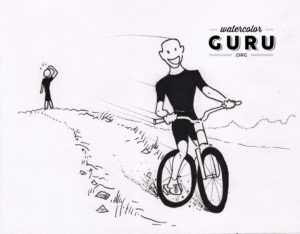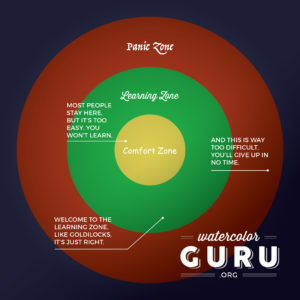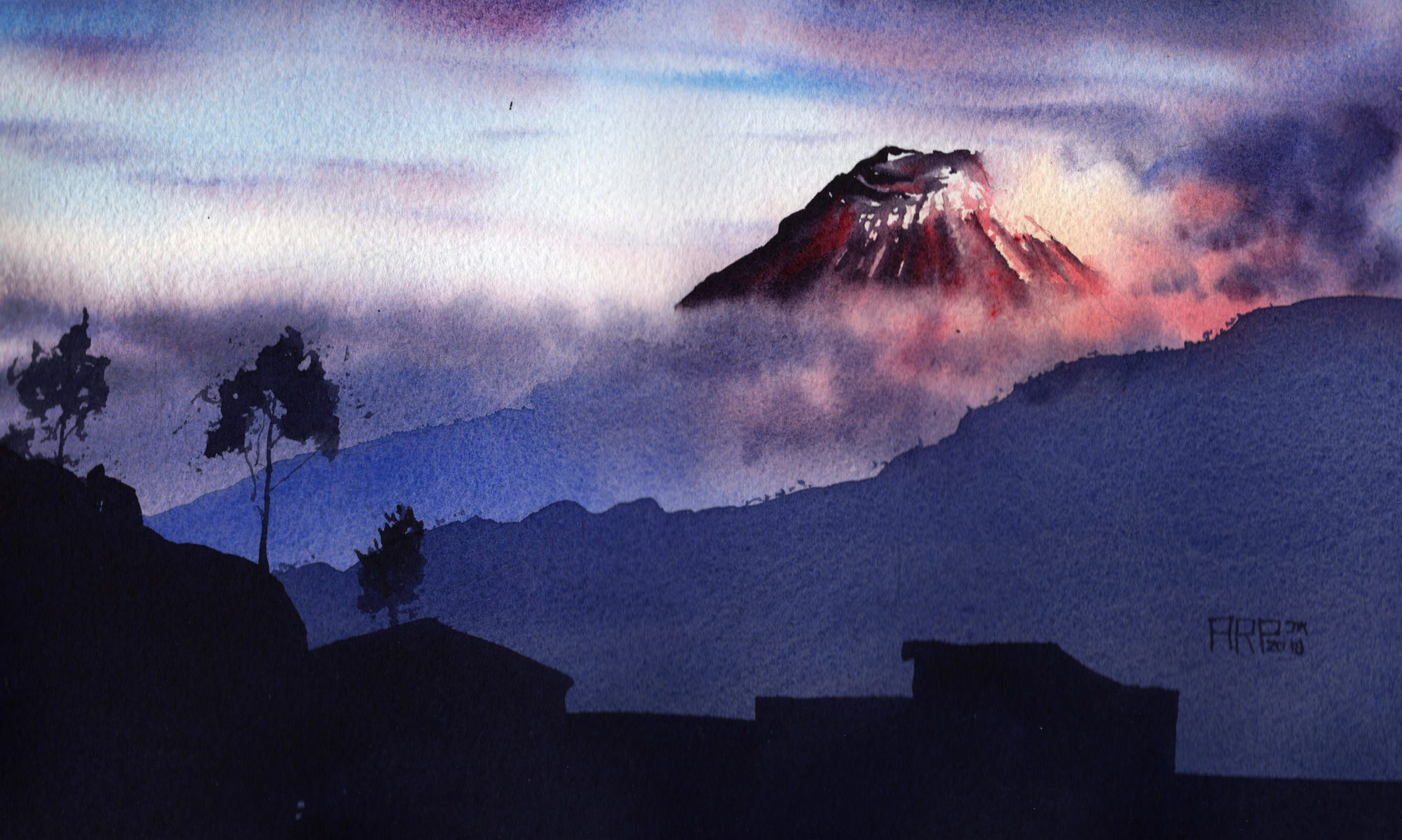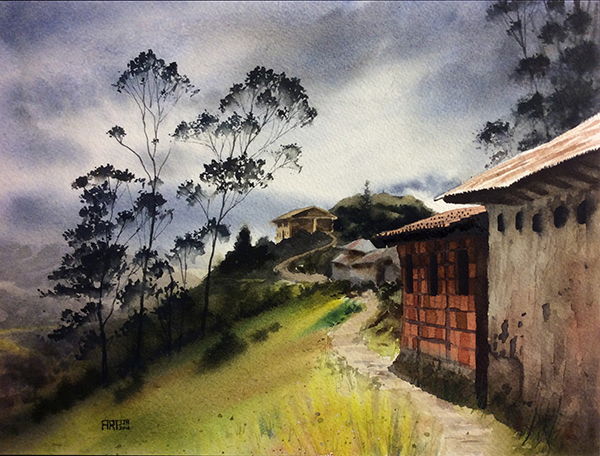“There are no shortcuts. If you want to get better at something, you just have to put in the time.”
Right?
Wrong.
Actually, not all practice was created equal. It’s not always apples to apples. It’s true, if you want to get better, you have to put in the hours no matter what. But doesn’t it make sense that an hour of hardcore, specific, focused practice will achieve more than an hour of goofing around, practicing the same stuff you’re already good at?
And, by extension, that a series of hours spent that way would achieve a greater result?
This is really the foundation of my entire method here at watercolorguru.org. So, let’s accept a few new paradigms:
- In order to improve, you must practice. A lot.
- An hour of deliberate practice will get you further than an hour of undirected practice.
- A lot of hours of deliberate practice will get you where you want to go – fast.
A metaphor for this would be riding a bicycle instead of walking. In a race between a walker and a cyclist, who will win? I’m not saying you should take shortcuts or cut corners – it’s not about that. It’s about taking the necessary path (practice), faster, with less wasted energy.

Let’s look at a few ways to make your practice more efficient.
Make it hard. If practice is comfortable for you, you’re doing it wrong. Kind of like with physical fitness, if it makes you uncomfortable, if it makes you burn and sweat, then that’s what you need to be doing. You can use discomfort as a compass, always pointing toward true North. If something is more scary to you, then you can bet that’s what you need to work on.
Look at the illustration below. Most people spend most of their time in the Comfort Zone. The trouble is, that’s not where learning happens. Get out of your comfort zone and into the learning zone; that’s when you’ll learn the fastest.
That said, it’s possible to careen right past the learning zone and into the panic zone. You’ll know you’re there when you are…panicking. When you’re taking on several challenges at once, or trying something that you’re not ready for, you’ll freak out and give up. Learning doesn’t happen in the panic zone either; you have to find that sweet spot between comfort and panic.

Be specific. This one is tough, because we all want to improve on everything at once. Too bad it doesn’t really work all that well.
In your practice, pick one thing that you want to focus on, say, color theory, and go all out on that until you know it forwards and backwards. Your brain only really knows how to concentrate on one thing at a time; if you try to work on your color theory, perspective, composition, brushwork, and anatomy all at the same time, you will struggle and maybe even learn nothing.
A better idea would be to do a subject that you’re more familiar with, but push the envelope on color. Just experiment with that variable, and keep the others under control.
This may seem slow, but trust me, if you do a hundred pieces, each with a focus on improving one, singular skill, you will have learned a lot.
As I’ve said before, just try to be 1% better with each work that you do. And if you do that over and over again, before long, you will be past the frustrating part.
Gather mentors and get brutally honest feedback. When you seek critique, make sure that you bring work that is in progress, not completed pieces. There’s no point in getting a critique on a finished piece; there’s nothing you can do to change it. Get feedback on your work when it’s 75% done and you can implement the suggestions. You also should be seeking advice on a continuous basis, not just once in a while.
Another note on mentors: get several of them, and make them diverse. A single teacher that instructs you perfectly will only succeed in making your work more like theirs. That’s okay at first, provided that you’re learning from masters, but eventually, you’ll need to break away and discover your own artistic voice. Getting instruction from diverse, even multi-disciplinary sources, will help with this. A few of my mentors have been:
- a classically trained oil painter
- a colorblind illustrator
- a watercolorist
- all of my teachers at college, including a photographer, a typographer, a layout expert, and several graphic designers
Immerse yourself in the field. Keep a collection on your tablet or computer of artwork that you like. Analyze what makes it successful. As you learn more about composition, compare your notes to the works of established artists; look for when they follow the rules, and just as valuable, when they break them.
Look at artwork constantly. This is the best way to discover your style – simply figure out what kind of work you like to make, and start making that. When you start making the type of work that you would enjoy looking at, you’re doing it right.
Watch videos online and buy books. All of the knowledge and wisdom you need to succeed already exists: there is no need to reinvent the wheel. Draw on the life’s work of those who come before you.
Do all of these things in tandem with massive amounts of practice, and you’ll surprise yourself with how fast you progress.
If you liked this, pass it on so your friends can benefit too. Let’s all get better together!

